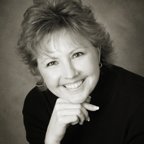Karen Dailey
Working in vendor and publication management, Dailey uses folder structure and metadata to help organize a variety of assets.
What companies/organizations have you worked for as a DAM professional? What was your role at each?
I worked in Marketing Communications at Autoliv ASP.Inc. between 1989 and 2013. My duties included corporate identity, publications management (forms, newsletters, posters, and various collateral items for communications), image/digital asset management (internal and external facing), vendor management (commercial and specialty printing, etc., graphic design groups) and working as a professional photographer (People – headshots, groups, events); (landscapes, floral, organics, etc.)
I’ve also worked as Karen B. Dailey Photography from the 1990’s to now.
How do you describe digital asset management to others?
Digital Asset Management is the act of identifying, organizing, renaming, and grouping digital files – from photos and PDFs to illustrations, presentations, letters, drawings, etc.
When I introduce others to the idea of Digital Asset Management, they get excited to know there is something better than dumping a host of files into folders and then being daunted with how to find the files when needed. I think most make a genuine effort to name their files (usually one at a time) but really don’t know where to start so they place them in a folder to be found and used at a later date because they are too busy to focus on the preparations and details I think because they don’t have a system.
Digital Asset Management is simply identifying and managing digital files which includes photos, illustrations, documents, presentations, etc.
A good Digital Asset Management system is basically a well thought out method of creating an organized system for digital assets to be stored, found and used/repurposed.
Assets need a home, so I recommend that people take some time to think through how they want to create a structured and functional file system that will be customized according to the organizational needs. It could be by organization, by department, by content, etc.
Plus, assets need a name, so I recommend creating a method of naming individual files so as to know their name, address and zip code, so to speak. Some key pieces would be a description, date, date, and so on. Once you find a method that suits your assets, make sure to apply it to other groups of assets and stay with the system.
How did you learn DAM? Any recommended sources?
Ed Leonard was a wonderful coach for Taxonomy when I first started. Gerry Siebel (Carey Digital) was critical to getting us setup using our DAM. Henry Stuart Symposiums were a great resource. And I used Adobe Bridge to batch filename and add metadata.
What’s the most important thing for someone new to DAM to understand about DAM?
Proper preparation of file folder structure and filename convention is huge! And they need to add keywords into the metadata fields of every digital asset.
If you weren’t doing DAM as a career, what would you be doing?
I’d be consulting (DAM, stock photography, portraiture, landscapes, art/painting etc. and I’d continue to be a professional photographer and offer publication support.
What is your ongoing greatest challenge with DAM?
Making time to prepare images (sort, color correct, rename) and placing in folders according to the taxonomy that I have created and adjusting it as necessary.
What is your vision for DAM? What will it look like in 5 years?
This is a tricky one. In this world of digital cameras and powerful computers, I think it’s inevitable that more people will work with a DAM system by default and may not realize it. They will need the knowledge and expertise to navigate. Unless all the smart devices out there will automatically name, sort and file.
What was your biggest mistake with regard to DAM?
Not doing it sooner and procrastinating proper file names and metadata when busy.
What was your biggest success with regard to DAM?
Creating an internal and external system for a global company and their customers.
What more would you like to learn about DAM?
New trends, new methods, efficient processes, things that step it up a notch. Updated copyright information – how, where, when, cost, pros and cons, etc.
This interview originally appeared on DAM Guru on Mon, 20 Jan 2014. For more DAM News interviews, see the interviews index page.
Share this Article:

